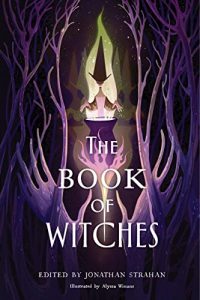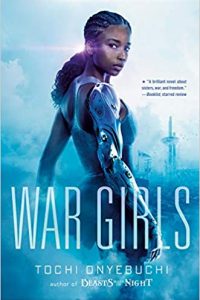Stefan Dzeimianowicz reviews Stephen Jones’ Best New Horror 25
Stephen Jones’s Mammoth Book of Best New Horror series celebrates its 25th anniversary this year, a landmark by any standard in genre publishing. There’s no overlap between the contents of Jones’s and Datlow’s anthologies, as has frequently been the case over the years, and the Best New Horror series has served the important function of reminding readers both that there are more outstanding horror stories written each year than can be gathered into a single anthology, and that different editors with different tastes are likely to bring more such stories to light for readers.
In the opening paragraphs of her Summation for The Best Horror of the Year: Volume Six, Datlow laments the space considerations that kept her from including several outstanding novellas, a form that horror fiction has long thrived in. Rather audaciously, Jones concludes the 21 selections for The Mammoth Book of Best New Horror: Volume 25 with Stephen Volk’s ‘‘Whitstable’’, which at about 40,000 words qualifies as a short novel. A tribute to iconic horror actor Peter Cushing, it tells of the relationship that develops between the actor and a young boy who has sought him out, believing him to be Doctor Van Helsing, the vampire hunter whom Cushing played in several Hammer horror films. (A recurring joke in the story is that people confuse Cushing with his roles, Christopher Lee, and his own grandfather.) For half of his story, Volk tantalizes the reader with the possibility that the boy’s tormentor is an actual vampire, rather than a predator of another sort. Although the tale’s ending is a bit contrived, Volk expertly captures in dialogue the precise, erudite manner of speaking that distinguished Cushing’s screen personae.
Breaking precedent with his previous annuals, Jones includes among his 21 story selections two stand-alone excerpts from Anno Dracula 1976–1991: Johnny Alucard, the fourth novel in Kim Newman’s Anno Dracula series. ‘‘Who Dares Wins: Anno Dracula 1980’’ evokes the global politics of its era in its account of a publicity seeking renegade vampire who takes over the Romanian embassy in London, demanding the establishment of a vampire homeland in Transylvania. In ‘‘Miss Baltimore Crabs: Anno Dracula 1990’’, the action shifts to the United States, and the discovery of a vampire drug cartel operating in a Baltimore straight out of the cable series The Wire. Both stories are vintage Newman, laced liberally with pop culture references and mixing fictional characters with people and events from real life. They’re a reminder that Newman was doing these sort of mashups, and doing them well, more than a decade before this approach became all the rage in genre fiction.
Two of Jones’s selections feature children’s books that prove sources of horror when elements seep from their pages into real life. The zinger final line of Joel Lane’s ‘‘By Night He Could Not See’’ reveals how aspects of Edward Lear’s nonsense verse have become clues in a series of inexplicable murders. In Reggie Oliver’s ‘‘Come into My Parlour’’, a young boy is terrorized by a book of instructional verse whose sinister-looking illustrations come to life. The juxtaposition of childhood innocence with the horrific has long been fertile ground for horror fiction, and several stories in Jones’s anthology grow out of it, notably Ramsey Campbell’s ‘‘Holes for Faces’’, in which a young boy traumatized by a vacation trip to the catacombs in Naples begins seeing leering mummy faces in the texture of surfaces of the world aboveground, and Neil Gaiman’s ‘‘Click-clack the Rattlebag’’, the narrator of which discovers why his young companion is so familiar with the titular monster.
Some of the book’s most creative stories dress up familiar horror themes in imaginative new finery. Both Nicholas Royle’s ‘‘Dead End’’ and Clive Barker’s ‘‘A Night’s Work’’ are nightmare stories, with Royle’s more a waking dream whose horrors are slowly making themselves known to the dreamers, and Barker’s a Twilight-Zone-style tale of dreams within dreams. Simon Kurt Unsworth, in ‘‘Into the Water’’, updates the tale of Lovecraftian horror with the rhetoric of global warming and catastrophic climate shifts. Lynda E. Rucker’s ‘‘The Burned House’’ is a haunted house tale in which the past and present of personal experienced are collapsed. Michael Marshall Smith’s ‘‘The Gist’’ can be read as a variant on the theme of the book of occult lore, just as Tanith Lee’s ‘‘Doll Re Mi’’, which echoes Robert Bloch’s classic short story ‘‘Fiddler’s Fee’’, is a wonderfully baroque variant on the tale of the egotistical artist getting his supernatural comeuppance.
This year, Jones’s introductory summation ‘‘Horror in 2013’’ runs 90 pages long. ‘‘Necrology: 2013’’, a list of obituaries for those in the genre that Jones compiled with Kim Newman, runs (disconcertingly) almost as long, at 73 pages. It has been said before, but it is worth repeating, that these book-long non-fiction surveys within the book of fiction provide the most comprehensive coverage in print of the year in horror, in all its literary and extra-literary forms. It’s a reminder of all the work that a diligent editor like Jones has to sift through in order to make his annual selections, and of the considerable industry in the field that yields those stories.








